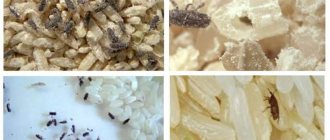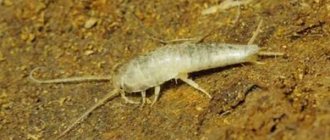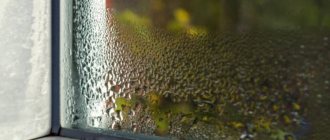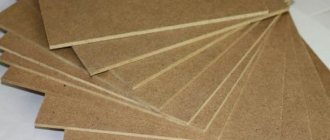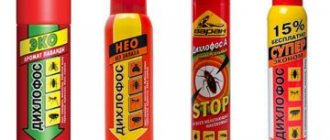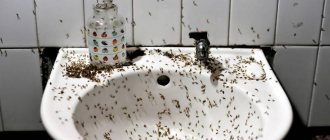Favorite places of moths
The food moth prefers groceries. She eats everything without exception:
- grain;
- cereal;
- hot spices;
- flour;
- cookies;
- sugar;
- breadcrumbs and other products.
Each species has its own food preferences, but often food butterflies do not disdain anything. This means that a pest can be found in any dry products. The larva eats the product and spins a silk cocoon. Rolls and lumps form in flour and cereals; nests with worms can be found in nuts.
Food moths fly poorly. She is not able to move between rooms on her own, and ends up in the apartment with things or food.
The food moth prefers groceries. She eats everything without exception
Ways to control insects
First, it’s worth talking about safety and prevention measures, namely:
- You should always inspect food products in the store before you buy them, for the presence of cobwebs in the package, and if there are any, this will already indicate that someone was in the package before you and left their traces.
- Carefully inspect the pieces of furniture and clothing you buy for the presence of the same cobwebs.
- The use of folk remedies to prevent and repel harmful insects - to do this, you need to place bags of dried lavender or tansy, as well as citrus peels (orange/lemon, garlic cloves) in places where moths may appear.
- Clean your pets' fur after walking.
To get rid of food moths, you will need to conduct a complete audit of all supplies and find the source of the “infection”. Find a bag or jar of food that contains unwanted guests, throw away the contents, and sift the remaining food (cereals, pasta), dry it, sort it out, and if possible, heat it in the oven or microwave. Next, all that remains is to store everything in tightly sealed jars and containers. To get rid of clothes moths, use fir oil, lavender, and in the summer be sure to seal the most valuable things from moth attacks in special airtight covers for fur coats.
Chemical repellents for moths
If we are talking about a case where there are a lot of moths at home, then you will need to resort to the help of chemicals; fortunately, there are a lot of such drugs, but not all of them are effective and safe for human health. The oldest way to fight moths is dichlorvos and naphthalene, but modern moths are unlikely to be penetrated by naphthalene, and with dichlorvos you will most likely kill yourself, but not the moth.
For this reason, you should not skimp and buy in bulk special plates (or a repellent liquid composition) for the fumigator, which after 5-7 days will eliminate all the moths in your home. In addition to these proposed methods of solving the problem, you can get rid of unpleasant butterflies using insecticidal sections and aerosols, but remember that no matter what drug you choose, it always comes with instructions, and you should read them in advance, before you go out to the warpath with moths.
What does a mole look like?
These are insects belonging to the order of butterflies. Their appearance directly depends on the species. Household pests are represented by the following types:
- food;
- wardrobe;
- grain;
- furniture butterfly.
The color is often inconspicuous - greenish, grayish. The sizes are small - up to 15 millimeters. An insect can place a nest in the house and in nature:
- rye;
- cabbage;
- apple
You can find out in more detail why moth larvae are dangerous by reading the corresponding article on our website.
Moths are insects belonging to the order of butterflies. The appearance of the moth directly depends on the species
A little about the pest
Origin of the species
Moths belong to the order Lepidoptera (that is, butterflies), which are characterized by being nocturnal. These are a very unassuming species of moths, which are usually no more than 1 cm in length. Traditionally, they are distinguished by their pale color with small patches on the wings, and most often they are gray or even brown in color. There are even a number of varieties of this family of insects, but in this review I would like to consider only two species that people most often encounter at home.
The most popular guests of our human abode can rightfully be called food and paid moths. Such butterflies can be distinguished by several differences in the color of their wings. Wool moths (that is, clothes moths) have a more golden color in their faded appearance, while grain (that is, food) moths are always gray in color and are distinguished by the presence of brown wings.
As you can guess, to the question of where moths appear in a home, it is impossible to give an unambiguous affirmative answer, which will also be unbranched, because for each mentioned variety the reasons for the appearance can be very different, taking into account their diametrically opposed food preferences. But still, there is something that unites such pests in the rooms of our homes in general or specifically in the kitchen. Moths usually appear in an apartment or house in cases where all the prerequisites for its appearance have been created in the form of the presence of an accessible and suitable food supply.
Insect threat
Please note that it is worth immediately noting the fact that the direct threat to provisions and wardrobe items will be posed specifically by the insect larvae, and not by the butterflies themselves. The fact is that adult insects will not feed on food or even fibers of natural origin (here we are talking about clothing), since they do not have an oral gnawing apparatus for this.
Their task will be to lay eggs after mating in the most suitable place for the development of larvae. But the larvae will represent the nutritional stage of the insect’s development, and this will indicate complete gluttony and focus on food consumption, as well as a set of required nutrients for pupation. It should be remembered that if a moth butterfly flies in a room or even in the kitchen area and you slam it down, this will not guarantee that all problems will go away with adult individuals. The eggs may already be lying around, and checking for their presence in the house will not be superfluous. Next, we propose to take a closer look at what exactly can cause this or that type of almost invisible, but at the same time very harmful insects to appear in the house.
Detection of food butterfly
This type of moth caterpillar typically feeds on solid food:
- cabbage;
- leaves, stems;
- cereal;
- nuts.
In some cases, the adult does not have a mouthparts and lives for less than a week.
The nest should be looked for either in or near food. Often this is an apple tree, cereals, cabbage. First, a small nest is formed. It contains larvae.
The food moth caterpillar typically feeds on solid food.
Signs of a pest
The presence of moths is indicated by the presence of eggs. But finding them is quite difficult due to their small size. In the closet, if you look carefully, you can see a large number of threads of cobwebs and pupae.
Flying insects usually do not go unnoticed. If there are 2 or more individuals in the apartment, you should immediately arm yourself with a flashlight and begin inspecting the premises. Carefully check in places where cereals are stored, in things made from natural fabrics, in kitchen furniture.
Finding moth eggs is quite difficult due to their small size
Varieties of house moths
Domestic moth species rarely enter the external environment for a long time, using it only as a transit zone between apartments and private houses.
Clothes moth
The house moth or clothes moth belongs to the family Tineidae. A common type of household pest lives in almost all countries except the Arctic and equatorial zones.
The life cycle consists of 4 stages:
- Egg. It has a cylindrical shape with clearly defined edges and a sharp end, pearl or white in color, dimensions 0.3-0.5 millimeters. Depending on climatic conditions, eggs mature in 7-30 days.
- Caterpillar. The length of a creature just hatched from an egg does not exceed 1 millimeter. The larva has mouthparts for eating and weaving silk. Caterpillars molt dozens of times during development, reaching maturity by 30-60 days and a length of 10-12 millimeters.
- Doll. After the accumulation of useful substances, the caterpillar stops eating food and begins to weave a silk spindle-shaped cocoon. It is smooth on the outside. The inside is covered with food debris and fecal pellets. The average size of the pupa is 5-8 millimeters. Weight – 4-12 milligrams. The cycle of complete transformation from this state to the adult takes 1-4 weeks.
- Imago. The body length of a fledged moth is 5-8 millimeters. The wingspan is 9-16 millimeters. The body of an adult is covered with golden bristles and has a beige tint. The narrow wings are framed with a fringe of long hairs. There are no spots on them.
After emerging from the pupa, the adult leads an active lifestyle. At a time, it covers a distance of up to 1 kilometer in flight, easily squeezes into narrow crevices, and hides in secluded places. Mostly males fly. From the first days, pregnant females practically do not rise into the air, but run from place to place, trying to hide in case of danger.
The female chooses dark places to lay eggs. In apartments and private houses these are wardrobes and other furniture where clothes and bed linen are stored. The laying process takes 2-3 weeks. One sexually mature individual produces 70-200 eggs during its existence (20-40 days).
Household clothes moth caterpillars feed on wool, fur, feathers, animal bristles, cotton clothing, carpet and rug coverings, and furniture upholstery. In the external environment, they eat the remains of dead insects, pollen, particles of dry organic tissue, and wool, which they find in the burrows of wild animals.
Fur moth
This type of insect is smaller than its “clothes” counterparts and reaches a length of 3-6 millimeters. Wingspan – 10-15 mm. There are dark specks on the outer surface, and on the inside their surface is light gray.
The fur moth has a development cycle typical of all Lepidoptera, consisting of 4 phases. The caterpillars are translucent and have 8 short abdominal legs on their sides. The main feature of insects is their taste preferences. They love to eat natural materials, in particular fur. In the absence of the latter, synthetic analogs, cotton, are used as food.
Fur moths are less common in apartments than clothes moths.
Furniture moth
This species of moth is classified as a separate species, despite its external similarity to its more common “brothers.” Insect larvae do not have full-fledged mouth tentacles, making it more difficult for them to consume classic moth food.
First of all, the caterpillars destroy the upper hair padding of the soft parts of the furniture. After accumulating a sufficient amount of useful substance, the larvae gradually appear on the outer surface of the upholstery and gnaw tunnels in it, concentrating in inaccessible parts of sofas, armchairs, beds, chairs, where they accumulate in large groups and form cocoons from which adult adults emerge.
After pupation, the moth has a dark yellow head, shiny wings with a brown base and outer silver-yellow covers. The size of an adult is 5-12 millimeters.
How to protect your home
It is important to know how to protect yourself from moths. Prevention will help protect your apartment from pests. The following measures are worth noting:
- use of special repellents;
- checking all food products after purchase;
- purchasing only those foods that can be eaten during the week;
- You should not purchase products in places where the products are sold at a very low price.
For moths, there are no more dangerous herbs with a strong odor:
- rosemary;
- sagebrush;
- lavender;
- tansy.
You can also use:
- horse chestnut;
- essential oils;
- vinegar;
- orange peel;
- strawberry or laundry soap.
Reasons for appearance
The moth is different in that it can appear in a home where cleanliness and order are maintained. Some housewives believe that they are not to blame for the appearance of moths in the apartment. Actually this is not true. Despite cleanliness and order, these insects are attracted by completely different factors, such as the presence of freely available bulk food or the presence of knitted items made from wool and other natural ingredients. Often, housewives do not pay due attention to the process of storing these components.
Moths can enter a home:
- Through open doors and windows.
- From the entrance, if they live in other apartments.
- With used furniture.
- Through cracks, air vents.
- With used things.
- With food purchased in a supermarket or market.
